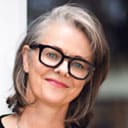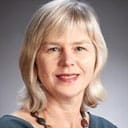Getting the deaf off their hands
Auckland film-maker Ann Andrews has embarked on a project that Television New Zealand initially regarded as unpalatable last year. She is making a film using deaf people.
While organisers for Deaf Awareness Week complain that deaf people look too normal to extract hard-cash sympathy out of the public, they can also be deemed as sounding too awful to be aired to the public. Television New Zealand finally relented but there was concern that all those peculiar grunts and croaks would horrify the listener.
And while Andrews does not agree, she has overcome the so called obstacle by allowing the deaf to use their first language — sign language. The former teacher of the deaf has recently completed a half-hour documentary on the making of a play by deaf children. Though there was help for professionals like actor Miranda Harcourt, dancer Maggie Eyre and musician John Gibson, the children determined the structure of the play themselves. They were calling the shots, or rather, signing the shots.
There has since developed a theatre for the deaf in Christchurch.
...
These actors are among the first of a generation of deaf children who have been allowed to use sign language in schools and teachers say the educational difference is enormous. Until 1970 deaf people had been told that sign language was forbidden and most deaf adults recall being told to sit on their hands at school. Speech was regarded as the zenith of achievement. It was thought sign language would impede their learning of speech and set them apart from the hearing community.
Unfortunately speech is not a realistic expectation for many deaf children. Even the best lip readers can only pick up 25 per cent of all words so sign language flourished secretly in the playground and in the deaf community. It has become known as New Zealand Signed Language. The first dictionary of the language will be published this year. NZSL is not taught in schools since it is not derived from English. It compacts information with great economy of movement but has a completely different structure to English.
Today children are taught Australasian Sign System which is a way of presenting grammatical English visually on the hands in English word order. But the teacher uses two languages at once, her lips carefully articulating English, her hands reinforcing it with a deft dance of signs that say the same things.
This is Total Communication, which means that anything that is appropriate to ensure a rich language at an early age may be used.
It is not exactly the Little Red School Book but the woman who introduced the system to New Zealand remembers the furore it caused, and still causes, in some quarters.
A former senior lecturer at Auckland Teacher’s College and now teacher at Auckland Kelston School for the Deaf, Nola Dickey, was appalled by the futility of the education system for the deaf. They appeared to gain little from the day they started school to the day they left — and no wonder. “Even Einstein couldn’t receive what he has no language for,” she says.
So in 1975 she staged a solo rebellion by switching to the philosophy of Total Communication.
“It was an extremely controversial thing to do and I was told by my superiors that if I didn’t stop my ‘French’ ways of throwing my hands around, they would tie them up behind my back,” Dickey says.
“The children took to it like ducks to water. The deaf have a natural affinity to signed language and the results were so much greater than we’d ever had.”
Dickey says she was constantly harassed by the education hierarchy. At one stage she was banned from using school stationary so she supplied her own. Parental support for the system was growing however and in 1979 the Education Department adopted the Total Communication philosophy.
Dickey says that adherence to the old ways persists in pockets and only recently a departmental meeting was held to discuss matters of concern between Dickey, the department and the Kelston hierarchy. Dickey claims that she has continued to be persecuted for her stance and this has led to her demotion from communications resource person to teacher but departmental officials say this sort of movement is normal practice. Others within the school say her impatient manner has alienated the more traditional teachers but all agree that the deaf and teachers of the deaf are indebted to her early efforts. Educational levels are up and teachers say the numbers of problem children have been reduced. For whatever reason problem behaviour by handicapped children is much higher than in the general population.
The deaf are also disproportionately represented in other areas as well. There are no statistics as yet (New Zealand Association for the Deaf is currently studying the problem) to prove it but there are believed to be a high number of deaf in psychiatric institutions, some simply because of stark frustration. It doesn’t help that there are no trained counsellors or psychologists for the deaf.
According to the Hearing Association a 1984 survey of prison inmates in Mt Eden prison showed that 50 per cent of inmates had hearing impairment yet no interpreters were available.
No-one knows for sure how many deaf there are in the community but it is estimated there are 480,000 deaf and hearing impaired in the country — that’s 14 per cent of the population compared with three per cent intellectually handicapped people. The bulk of this are hearing impaired. Severe or profound deafness is a relatively rare disability and with no major rubella epidemics, the incidence is decreasing. Nevertheless the services are still stretched.
There are three deaf primary schools in New Zealand though the education department ministerial review aims at mainstreaming deaf children, that is, providing interpreters in normal schools rather than providing residential schools especially for the deaf.
However tertiary education does not cater for the deaf at all. Forty-six hearing tutors are employed throughout the country to help people deal with their handicap but there are only five interpreters in New Zealand. They are the products of the only course to have ever been run in New Zealand two years ago. The NZ Association for the Deaf says its main thrust for 1987 is to set up an interpreter training school. Interpreters are used widely by the courts, hospitals for meetings, funerals, job interviews for example.
It was on the last training course that an attempt to codify New Zealand Sign Language was made. Deaf people were videoed as they told stories to each other and the signs were recorded.
Says interpreter Linda Prouse; “Before the course started it was thought there would only be about 50 signs and that they would all be gesture. That was wrong. We found 2500 signs on our course and about half of these are now documented in the dictionary.”
“As far as I’m concerned the deaf have been deprived and whether it is obvious or not they all have a sign language. For example I had to go to this chap recently and interpret for him. His hearing friends said he couldn’t sign and he indicated also that he couldn’t sign but I kept going and finally he let rip. He could sign alright.”
Prouse talks about the desperate need for interpreters, not only in English but also for Maori, Pacific Island people and other ethnic groups. In her experience the deaf willingly aid interpreters and were particularly helpful on the course, but it is a support that other organisations catering for the deaf openly envy.
The National Foundation for the Deaf is an umbrella organisation for a number of deaf groups but they say they receive little back-up from the community they serve. Their explanation is that in part it is due to a deaf personality type that has evolved as a result of their deprivation. Many deaf people are introspective souls who make sure their “invisible” handicap remains invisible.
And that’s understandable, says the Foundation’s Linda Parkinson. “Hearing people just don’t know the loneliness of never hearing. Helen Keller, who was both deaf and blind, said that of the two disabilities she would prefer to be blind because if you have communication you will manage anywhere at anytime.”
She says the Foundation is at fault too for not being as up-front as they could have been. But that is promised to change.
Developmental psychologist Dee Twiss advances another possibility. Twiss has a deaf daughter herself and has researched the learning of language through sign. She says that perhaps the Foundation’s lack of support is due to the fact it employs hearing people to help the deaf.
“Which starts first? Do you say there are no leaders able to be self-sufficient in the deaf community or do you train them and help them to help themselves?” An important American university for the deaf isolated leadership as the most critical issue facing the deaf today.
“When we say they are not managing we are putting them down in the same way we put down other ethnic groups. In fact we haven’t provided them with the context in which they can manage. In the States, there is an area which spawns a lot of deaf doctors, lawyers and so on but they come from a rich deaf community where there are a lot of good role models. Talking to a group of deaf people in America is like talking to a group of intelligent and politically astute activists.
“Let’s not forget that their language was suppressed till recently. It’s very hard to acquire a complex language under those circumstances.”
Twiss believes passionately that any deficiency we see in deaf people is the result of our inadequacy in looking after the deaf. She gives reading as an example. Most deaf people reach a reading ceiling at nine years of age. They are not intellectually impaired she says, since they manage their world with evident flexibility but all their communication is impaired. Twiss argues that the structure of the language they use to express themselves is lacking an environment that’s an effect of an insufficient, inadequate education, not an effect of deafness.
She cautions the sceptical to remember that deaf children are usually taught their first language by people for whom sign language is a second language. Even the keenest hearing parent only achieves a “middling good” skill in sign language. What deaf children need is more contact with deaf adults she says. She would also like to see books written in sign language for the deaf. There are none at present.
Despite the difficulties, Twiss is more optimistic about the future of the deaf. She sees the adults moving rapidly toward a new-found pride in themselves and their culture.
“My daughter is five years old and it’s our goal to see that she is bilingual and very proud of her deaf community. Hopefully these kids will grow up to feel arrogantly deaf.”
Photo captions (Top): The deaf children’s drama group rehearsing — at left, actors Andrea Andrews, Melissa Wilson, Rachael Harrison (top row), Aaron Arnold, Melissa Lukes; (Bottom): Rachel Locker, field officer for the deaf in Wellington, interprets for the Pope during the recent Papal Visit.
- Storytelling/Performances
- TV/Media





























